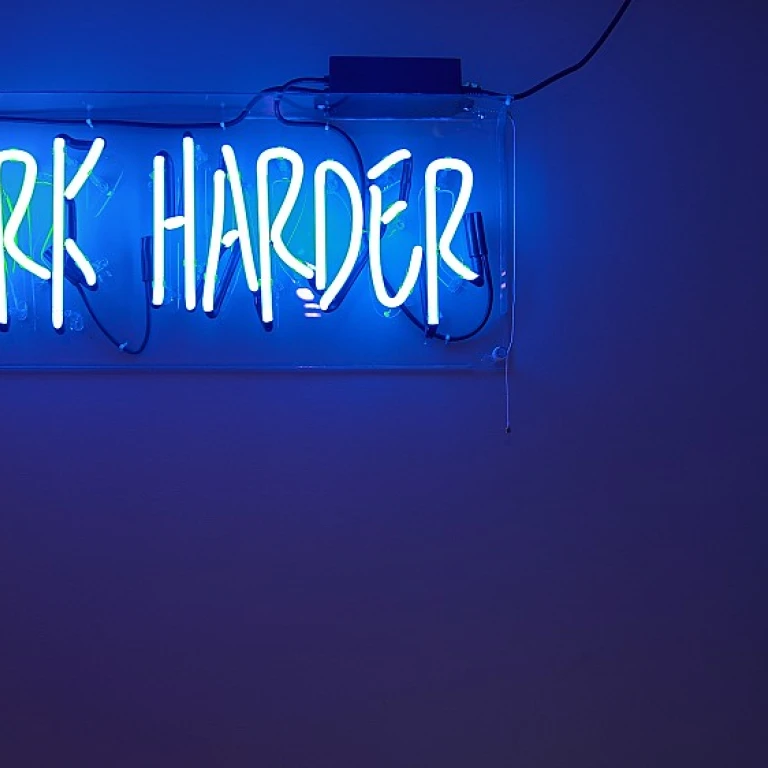
Understanding the role of an hr data analyst
The evolving landscape of data-driven HR roles
Today’s organizations are increasingly turning to data analytics to optimize their human resources strategies. The HR data analyst is at the center of this transformation, bridging the gap between people analytics and business objectives. This role is not just about crunching numbers; it’s about interpreting complex data to help managers and leaders make informed decisions that impact workforce performance, employee engagement, and overall organizational success.
What does an HR data analyst do?
An HR data analyst specializes in collecting, analyzing, and interpreting data related to human resources. This includes metrics on employee turnover, performance management, employee relations, and resource management. By leveraging analytics data, the analyst identifies trends and patterns that can reveal risks or opportunities for the business. Their insights support strategic human resource planning, helping organizations stay ahead in a competitive market.
- Monitoring workforce trends and predicting future needs using predictive analytics
- Supporting performance management by providing actionable metrics
- Partnering with HR managers and business leaders to align analytics with organizational goals
- Improving employee engagement and retention through data-driven strategies
Why is this role important for organizations?
As companies face challenges like employee turnover and shifting workforce demographics, the HR data analyst’s role becomes even more critical. Their ability to turn raw data into strategic insights helps organizations manage risk, improve employee relations, and drive better business outcomes. For those considering a career path in this field, a background in data analysis, human resources, or a degree in human resource management can be valuable. Certificate programs and hands-on experience with analytics tools also enhance job prospects.
To understand more about the broader context of human resources analytics and how direct hire practices fit into this landscape, you can explore this guide to direct hire in human resources analytics.
Key responsibilities and daily tasks
What Does a Typical Day Look Like for an HR Data Analyst?
The daily work of an HR data analyst is dynamic and closely tied to the evolving needs of the business and workforce. Analysts spend much of their time collecting, cleaning, and organizing data from various human resources systems. This data includes employee performance, engagement, turnover, and resource management metrics. The goal is to ensure data quality before moving on to deeper analytics.Core Tasks and Deliverables
HR data analysts are responsible for transforming raw data into actionable insights that support strategic human resource decisions. Their main tasks often include:- Building and maintaining dashboards to track workforce trends, employee relations, and performance management metrics
- Conducting data analysis to identify patterns in employee turnover, engagement, and risk factors
- Preparing reports for HR managers and business partners to inform decision-making
- Supporting predictive analytics projects, such as forecasting future hiring needs or identifying potential retention risks
- Collaborating with HR teams to define key metrics and align analytics data with business objectives
- Ensuring compliance with data privacy regulations and internal policies
Collaboration and Communication
A significant part of the role involves working closely with HR managers, business partners, and other stakeholders. Analysts must translate complex data findings into clear, actionable recommendations. This often means presenting analytics results in meetings or responding to interview questions about workforce trends and performance.Supporting Strategic Initiatives
HR data analysts play a key role in supporting initiatives like employee engagement programs, performance management, and risk assessment. Their work helps organizations make data driven decisions that improve employee relations and overall organizational performance. For example, by analyzing employee turnover data, they can help management develop strategies to retain top talent.Continuous Learning and Adaptation
Given the rapid evolution of analytics tools and HR technology, analysts are expected to stay updated on the latest trends and best practices. Many pursue a certificate program or degree in human resource management or data analytics to advance their career path. For a practical example of how HR data analytics can reveal important workforce insights, see this guide on what HR analytics reveal about the Family Medical Leave Act in Michigan.Essential skills for hr data analysts
Core Competencies for Success in HR Data Analytics
To thrive as an HR data analyst, a blend of technical and interpersonal skills is essential. This role goes beyond crunching numbers; it requires understanding people, business goals, and the evolving landscape of human resources. The right mix of abilities allows analysts to transform analytics data into actionable insights that drive workforce and performance management.
- Data analysis and interpretation: Proficiency in data analytics tools is foundational. Analysts must be able to collect, clean, and interpret large sets of employee and organizational data, identifying trends and metrics that impact business outcomes.
- Business acumen: Understanding how human resource data aligns with broader business objectives is crucial. This skill helps analysts act as strategic business partners, supporting management in making data driven decisions about resource management and employee engagement.
- Communication and storytelling: The ability to translate complex analytics into clear, actionable recommendations is vital. HR data analysts often present findings to managers and stakeholders who may not have a technical background.
- Problem-solving: Analysts must approach challenges—such as employee turnover or risk management—with a solution-oriented mindset, using predictive analytics to anticipate issues before they escalate.
- Technical proficiency: Familiarity with analytics platforms, HR information systems, and visualization tools is expected. Many pursue a certificate program or degree in human resources, data analytics, or a related field to build these capabilities.
- Ethical and cultural awareness: Handling sensitive employee data requires a strong sense of ethics and an understanding of workplace culture. Analysts play a key role in supporting a harassment-free environment. For more on how behavior impacts workplace culture, see how to know if your behavior supports a harassment-free culture at work.
These skills are not only valuable for the current job market but also support long-term career growth. As organizations increasingly rely on people analytics to inform strategic human resource decisions, the demand for skilled HR data analysts will continue to rise. Whether you are considering this career path or looking to enhance your expertise, focusing on these competencies can help you stand out in the field.
Common challenges in hr data analytics
Overcoming Obstacles in Human Resources Data Analysis
Working as an HR data analyst can be rewarding, but it comes with its share of challenges. Navigating these obstacles is essential for anyone looking to build a successful career in human resources analytics. Here are some of the most common issues faced by professionals in this role:
- Data Quality and Consistency: One of the biggest hurdles is ensuring that the data collected across the organization is accurate, up-to-date, and consistent. Inconsistent employee records or incomplete workforce metrics can lead to unreliable analytics and impact performance management decisions.
- Data Integration: HR data often comes from multiple sources—payroll systems, performance management tools, employee engagement surveys, and more. Integrating these sources into a single analytics platform can be technically complex and time-consuming.
- Data Privacy and Security: Handling sensitive employee information requires strict adherence to privacy regulations and internal policies. Any breach can put both the organization and its workforce at risk, making data security a top priority for HR analytics professionals.
- Stakeholder Buy-In: Convincing managers and business partners to trust and use data-driven insights can be challenging. Some may rely on intuition or past experience rather than analytics data, making it crucial for the analyst to communicate the value of people analytics clearly.
- Changing Business Needs: As organizations evolve, so do their human resource analytics requirements. Analysts must stay agile, adapting their skills and approaches to address new business trends, workforce challenges, and strategic human resource goals.
- Technical Skills Gap: The rapid advancement of analytics tools and predictive analytics technologies means that HR data analysts need to continuously update their skills. Pursuing a certificate program or a degree in human resources analytics can help bridge this gap and support career growth.
Despite these challenges, HR data analysts play a vital role in driving better decision-making and improving employee relations. By addressing these obstacles, they help organizations unlock the full potential of their workforce and support long-term business success.
How hr data analysts drive better decision-making
Enabling Informed Decisions with Data-Driven Insights
Human resources analytics has transformed the way organizations make decisions about their workforce. By leveraging data analysis, HR data analysts help managers and business partners move beyond intuition and guesswork. Instead, they use analytics data to uncover patterns and trends that drive better outcomes for both employees and the organization.
- Workforce Planning: Data analytics enables organizations to anticipate staffing needs, identify skills gaps, and plan for future talent requirements. This proactive approach supports strategic human resource management and helps reduce risks related to workforce shortages or surpluses.
- Performance Management: By analyzing performance metrics, HR data analysts provide insights into employee productivity and effectiveness. This information supports managers in making fair, data-driven decisions about promotions, training, and development opportunities.
- Employee Engagement: Analytics can reveal what drives employee satisfaction and retention. Understanding these factors allows organizations to implement targeted initiatives that improve employee relations and reduce turnover.
- Risk Management: Predictive analytics helps identify potential risks such as high employee turnover or compliance issues. Early detection allows for timely interventions, protecting both the workforce and the business.
Supporting Strategic Business Goals
HR data analysts play a crucial role in aligning human resource strategies with broader business objectives. Their skills in data analysis and people analytics provide leadership with actionable insights that support growth and innovation. Whether it’s optimizing resource management or tracking the effectiveness of a new certificate program, analytics ensures that decisions are grounded in evidence, not assumptions.
As organizations continue to recognize the value of data-driven decision-making, the role of the HR data analyst becomes even more essential. This career path offers opportunities to influence key aspects of the business, from workforce planning to performance management, making it a vital part of modern human resources management.
Tools and technologies used by hr data analysts
Popular platforms and software in people analytics
HR data analysts rely on a variety of tools and technologies to transform raw data into actionable insights. These platforms help organizations manage workforce metrics, monitor employee engagement, and support strategic human resource management. The choice of tools often depends on the size of the business, the complexity of data analysis required, and the specific goals of the HR department.
- HR Information Systems (HRIS): Central to most organizations, HRIS platforms like Workday, SAP SuccessFactors, and Oracle HCM Cloud store employee data, track performance management, and support resource management. These systems are essential for data-driven decision-making and efficient employee relations.
- Business Intelligence (BI) Tools: Tools such as Power BI, Tableau, and Qlik Sense enable analysts to visualize trends, monitor key metrics, and create dashboards for management. These platforms are valuable for predictive analytics and identifying risk factors like employee turnover.
- Statistical Analysis Software: For deeper analytics, software like R, Python (with libraries such as pandas and scikit-learn), and SPSS are used. These tools help analysts perform complex data analysis, forecast workforce needs, and support strategic business partner roles.
- Survey and Feedback Tools: Platforms like Qualtrics and SurveyMonkey are commonly used to measure employee engagement and gather feedback, which feeds into broader analytics data for performance management and employee relations.
Integrating technology with HR skills
Mastering these tools requires a blend of technical and human-centric skills. Analysts must be comfortable with data analytics platforms and understand how to interpret results in the context of organizational goals. A certificate program or a degree in human resources, data analytics, or a related field can help develop these skills and advance a career path in HR analytics.
As the role of the HR data analyst evolves, staying updated with the latest trends and technologies is crucial. This not only enhances job performance but also positions the analyst as a strategic business partner, supporting the organization in making informed, data-driven decisions about its workforce.
| Tool/Platform | Main Use | Key Benefit |
|---|---|---|
| Workday, SAP SuccessFactors | HRIS, Resource Management | Centralizes employee data and supports performance management |
| Power BI, Tableau | Data Visualization | Identifies trends and supports strategic decision-making |
| Python, R, SPSS | Statistical Analysis | Enables predictive analytics and advanced data analysis |
| Qualtrics, SurveyMonkey | Employee Engagement Surveys | Gathers feedback for improving employee relations |



